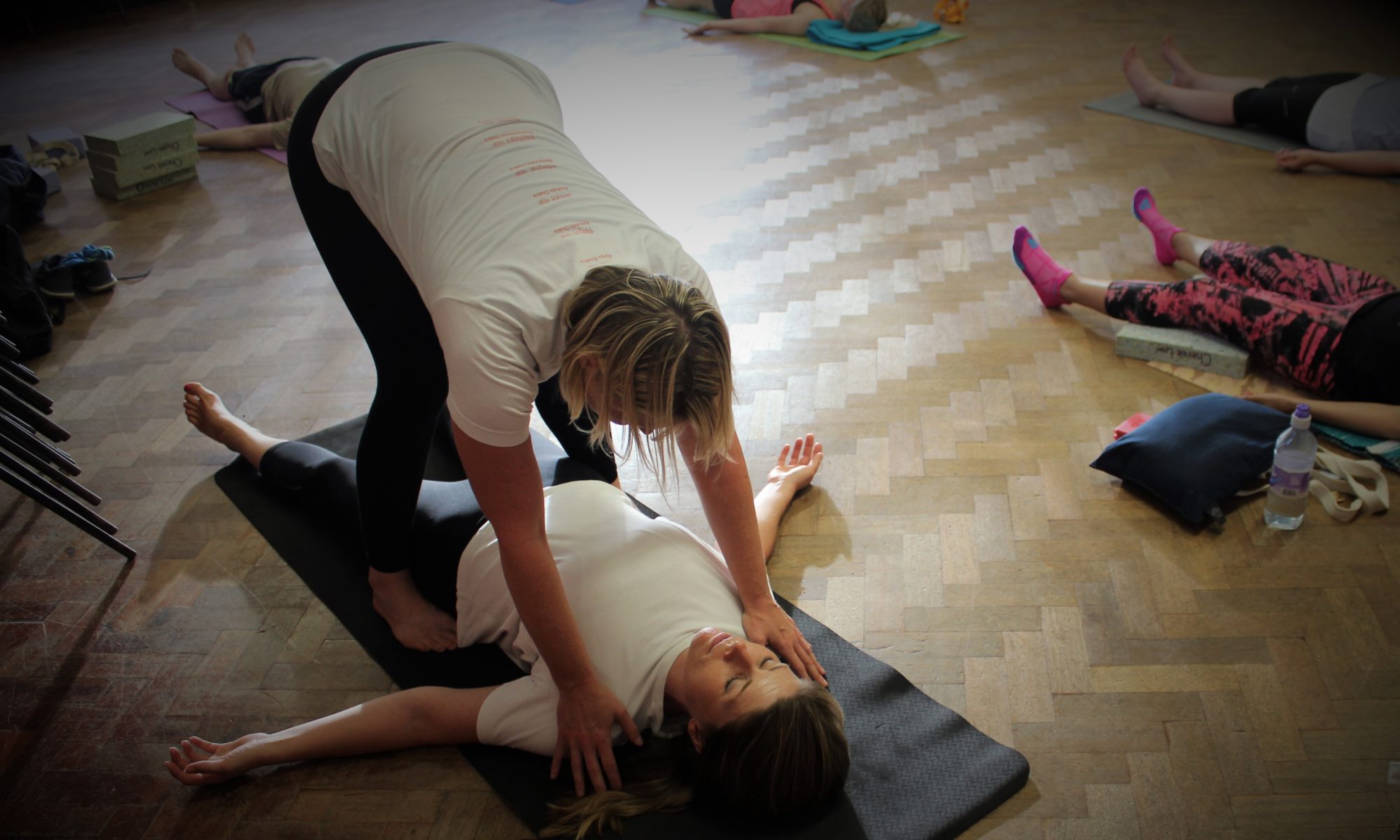
Swastikasana
Adho Mukha Virasana – hands to the wall
Adho Mukha Svanasana – thumb and index finger to wall, press the hands down and forward to take shoulder-blades in and up
Adho Mukha Virasana – hands to the wall
Adho Mukha Svanasana – hands at wall, lead with the legs, turn back thigh from inside out, broaden hamstrings and take femur back
Tadasana – bend knees, resist calves forward as the thighs draw up, keep weight on the front of the heel
Urdhva Baddhanguliasana in Tadasana Uttanasana – sole of
Uttanasana (concave phase)- sole of foot on rolled sticky mat
Ardha Uttanasana – teachers assist students, one belt around fullest part of calves pulling forward, second belt around fullest part of thigh pulling backward
Adho Mukha Vrksasana preparation – “L” shape, feet up wall at hip height. Use legs as in Uttanasana to lengthen trunk
Adho Mukha Vrksasana – forearms back, shoulders forward; thighs back, buttocks forward
Utthita Hasta Padangusthasana – restrain standing leg movements by keeping weight on inner front heel. 3 phases:
3 phases:
1. bend lifted leg to trunk
2. hold foot in both hands and straighten leg only as far as possible keeping leg in contact with trunk
3. straighten the lifted leg by taking lower leg up (thigh may come away from trunk)
Utthita Trikonasana – back heel at wall, place brick under front leg calf, pull up on thigh to straighten leg, repeat without brick
Utthita Parsvakonasana – back heel at wall, bring both hands to floor inside front foot, keep trunk near leg and hand on floor, place opposite hand on hip and enter pose from the bottom up.
Prasarita Padottanasna (concave phase) – gradually narrow the feet towards Uttanasna maintaining the top of the sacrum in as in Prasarita Padottanasana
Uttanasana (concave)- brick on sacrum secured with long belt around heels
Uttanasana – teachers assist with belt just below buttock bones, lifting hamstrings, buttock bones as the trunk descends further
Adho Mukha Svanasana
Sirsasana – eka pada
Paripurna Navasana – from bent legs, lift top of sacrum in and maintain as legs straighten
Ubhaya Padangusthasana
Marichyasana I – movement first, then holding foot in both hands, taking both sides of sacrum and trunk forward
Akarna Dhanurasana I – movement first, then holding straight-leg foot with looped belt, allow ankle to supinate to soften groin (as we do in Baddha Konasana)
Eka Hasta Bhujasana – roll bent leg in, hollow abdomen
Dwi Hasta Bhujasana
chair Kurmasana
repeat Dwi Hasta Bhujasana
Bharadvajasana I
Purvottanasana – bent legs
Salamba Sarvangasana – eka pada
Savasana



